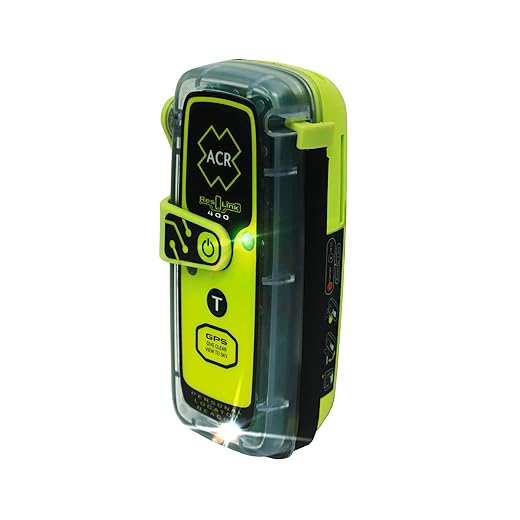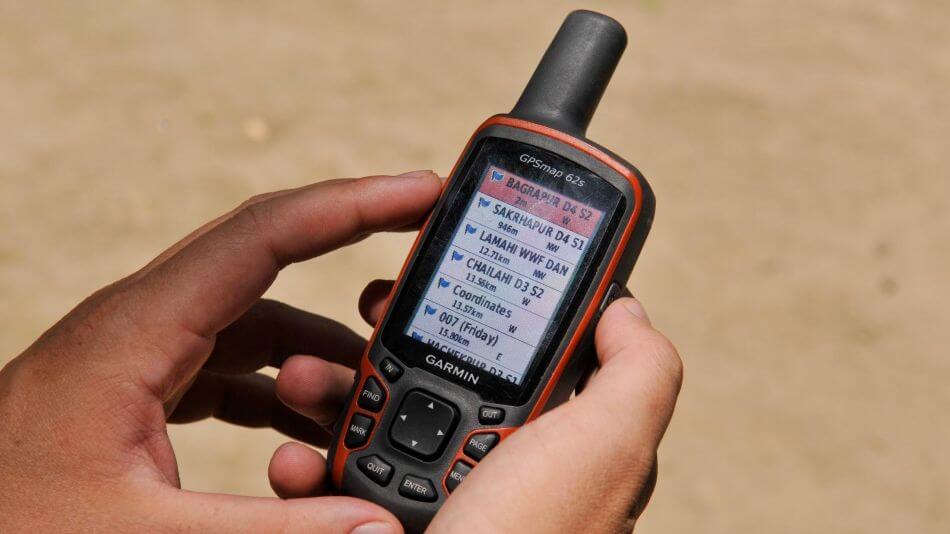When your phone doesn’t have a signal, who do you text? Meet the handheld emergency satellite communicator sidekicks that actually ANSWER.
You will not be stranded.
Imagine your phone dies at the worst moment. You want simple gear that gives SOS, messaging, or maps when cell service quits. Short setup. Reliable signal. Clear location.
Emergency signaling. Two-way messaging. Built-in maps or a one-button beacon. This roundup helps you pick the right tool for backcountry navigation, travel, or pure peace of mind. Read fast. Choose smart.
Emergency Satellite Communicator Top Picks








Handheld Satellite Communicator with Topo Maps
You get a full-featured handheld that combines two-way satellite messaging with built-in topo maps and advanced sensors. It is an excellent fit when you want comprehensive navigation, tracking, and an interactive SOS platform in one unit.
Who should consider this unit
If you want a single device that provides mapping, navigation, and satellite messaging, this handheld is a strong choice. It is designed for people who will use topo maps and routing in the field and who value built-in sensors for elevation and heading information.
Standout features and benefits
Having maps on the device removes the dependence on a phone and reduces the number of devices you need to carry. The tracking and map features are valuable for route finding in complex terrain.
Practical notes and limitations
You will pay more up front for the hardware and for the recurring satellite subscription. The unit is heavier than pocket communicators, but the trade-off is fuller navigation capability. If you value integrated maps and a rugged handheld layout, this device provides a complete toolset for multi-day or backcountry travel.
Field tips
Keep the unit charged and preload routes before you head out. Spend a little time with the tutorials or videos so you can quickly access key functions in an emergency. If you use the SOS feature, be prepared to provide details and follow instructions from the monitoring center.
Compact Two-Way Satellite Communicator
You benefit from a small, rugged communicator that fits on a pack or keychain without adding bulk. The device pairs well with your smartphone for longer messages and mapping while offering dependable SOS support and long battery life.
Why hikers and travelers pick it
This compact communicator gives you two-way text capability and interactive SOS worldwide while keeping the weight low. You can clip it to your pack or slip it in a pocket and still have the tools you need to check in with family, trigger an emergency response, or sync routes from the Garmin Explore app.
Important features to know
These features make the device a great match when you want dependable communication and essential navigation features without carrying a full handheld GPS.
Practical use and trade-offs
The unit works best paired with a smartphone, where typing and map display are easier. You will pay for airtime and should factor subscription costs into your planning. In tough conditions, message timing can vary, but the device has strong reliability for most backcountry scenarios. If you need full-size maps on the device itself, you may prefer a larger handheld GPS.
Quick tips for success
Charge the unit before long trips and practice sending a few messages near home so you know the flow. Use the app to draft messages, set up contacts, and manage tracking intervals to balance battery life with location sharing.
Mini Satellite Communicator, Compact and Lightweight
You get a small, dependable communicator that is designed to go anywhere without weighing you down. It provides essential messaging, TracBack navigation and reliable SOS performance while pairing cleanly with a smartphone for maps and longer texts.
Ideal use cases
This compact communicator is built for people who want robust satellite messaging with minimal weight. It is especially suited for hikers, ultralight backpackers, and travelers who prioritize carrying less while not sacrificing safety and connectivity.
Standout functions and benefits
Pairing with the app gives you the comfort of full-size mapping and easier typing while the device itself remains small and rugged. Battery life is strong when you balance tracking intervals against power needs.
Practical caveats and tips
You should plan for subscription costs when budgeting for long trips. Test activation and message flows at home so you understand how messages are delivered and how emergency alerts look to responders. If real-time voice is required, look at satellite hotspots instead, but for most travelers, this device provides an excellent mix of size, safety, and capability.
How to get the most from it
Use the app to draft messages and preload routes before remote travel. Charge the device and bring a small power pack for extended use. Keep the unit accessible so you can get a clear view of the sky quickly when you need to send a message or trigger SOS.
Subscription-Free GPS Personal Locator Beacon
You get reliable one-button distress signaling without the need for a subscription. The unit is light and simple to operate, which is critical when you need rescuers to find your exact location quickly.
Core purpose and who should carry it
This personal locator beacon is made purely to summon professional rescue services anywhere in the world. It is ideal if your priority is guaranteed emergency notification without recurring fees, and you do not need two-way messaging.
Key rescue features
Those capabilities mean emergency responders can find you more quickly and with better positional accuracy. The global Cospas-Sarsat network ensures your signal is relayed even in remote regions.
Practical considerations
PLBs are compact and designed for quick activation. They do not replace two-way communicators if you want to exchange information with family or with responders. You must register the device and plan for battery replacement after the service life ends. Secure the antenna or its housing to avoid accidental deployment when stored in a pack.
Field tips
Keep the unit easily accessible so you can deploy it quickly if needed. Register the device with your contact and medical information ahead of time. Consider combining a PLB with a two-way messenger if you want both guaranteed rescue signaling and the ability to communicate status updates.
Compact Two-Way Messaging Satellite Communicator
You can share location and messages with multiple contacts and use preset check-ins that do not count toward your message allowance. The device balances long battery life with the convenience of app pairing for richer messaging and group chats.
Who benefits from this communicator
This model focuses on keeping families and groups in contact with lightweight hardware and broad messaging options. You get on-device confirmation of sends and reliable SOS interaction while still relying on a paired smartphone for richer typing and map views.
Important features in the field
These features make the device very useful for longer expeditions, multi-person trips, and situations where the family wants continuous check-ins rather than full voice service.
Limitations and practical advice
Expect to pair it with a smartphone for the best messaging experience. You will need to pick a subscription plan that fits how frequently you will use the satellite service. If you are unfamiliar with satellite devices, allow extra time to activate and test the messaging and SOS flows before you go remote.
Quick user tips
Set up group contacts and test a few messages with your contacts so they understand how responses will appear. Use safety charging only as an emergency measure for phones. Keep the communicator accessible when you are in areas with variable tree cover or canyon walls so satellite locks are faster.
Two-Way Global Satellite SMS Communicator
You get reliable two-way texting and check-ins without a steep hardware price. The device is rugged and has long battery life, making it a practical choice for travel and backcountry outings.
What it is and who it suits
The ZOLEO communicator gives you simple, reliable two-way messaging when you are outside of cell coverage. It links to the Iridium satellite network but will automatically use cellular or Wi-Fi when available, so you pay the lowest-cost network. You will appreciate how easy it is to send long text messages and check in with family without fiddling with a complex interface.
Key features and benefits
These features make it ideal if you want a pocketable safety device that focuses on messaging and emergency alerting. The dedicated SMS number is especially useful because friends or colleagues can text you directly, just like a normal phone number.
Practical insights and limitations
The device is built tough, and it holds a charge for many days with light use. You can also share location waypoints and receive weather forecasts. Keep in mind that you need a view of the sky for the fastest satellite transmissions and that advanced navigation features are not provided. If you want maps or route planning, plan to bring a separate GPS app on your phone.
Real-world tips
If you rely on the ZOLEO for a long trip, test setup and messaging while you are still near service, so you know how contacts will see your messages. Consider pairing it with a small power bank and keep your contact list and emergency contacts up to date so SOS alerts are routed correctly.
Portable Satellite GPS Messenger for Tracking
You get a low-cost tracking and check-in tool that works well for routine safety updates and simple SOS alerts. The device is easy to use, but you should be aware of service and reliability caveats reported by some users.
Why people choose this device
This messenger targets users who want a simple, cost-effective way to share location and to call for help beyond cell coverage. It is often chosen for family safety, solo day trips, and low-frequency backcountry travel where budget is an important factor.
Key capabilities and trade-offs
The basic functions are straightforward, so you can get up and running quickly. If you rely on frequent two-way conversations or need advanced map features, you may find the platform limited compared with higher-end products.
Practical notes from users
Some buyers praise the ease of sending checks and tracking links to family. Others have experienced activation or server downtime that affected message delivery. For critical use, test the device with your chosen service plan well before you need it so you understand delivery behavior and any vendor support windows.
Tips for use
Choose a service plan that fits how often you will use the device, and consider suspending service in long downtimes to save cost. Carry spare batteries and practice sending check-ins so loved ones know what to expect when they receive alerts.
Iridium GO! Satellite Phone Wi-Fi Hotspot
You can connect multiple devices for voice, messaging and limited data over Iridium satellites, which is convenient for small teams or families. Expect some complexity during setup and slower data speeds compared with terrestrial networks.
What it does well
This hotspot turns Iridium satellite connectivity into a Wi-Fi endpoint so your smartphone can make calls and send messages anywhere on the planet. You can share that connection with a few teammates while keeping a single, rugged piece of hardware as the communications hub.
Key advantages and practical use
This makes the unit useful when a group needs basic connectivity and voice access in a location without cell coverage. It is a compelling option for remote operations, humanitarian work, and group travel into areas with no infrastructure.
Realistic expectations and limitations
Data throughput is slow, and web browsing can be unreliable. The setup and app can be confusing at first, and some users report firmware and linking problems that require vendor support. If you need simple, robust emergency texting only, a dedicated satellite messenger can be easier to use. For group voice and multi-user sharing, this hotspot is a strong fit when you accept the trade-offs.
Tips for smoother operation
Test the unit with your devices before you travel, and carry a small external antenna if you will mount it on a vehicle or aircraft. Keep backups for power and familiarize yourself with the app workflow so you can connect quickly when you need it.
Final Thoughts
Best overall pick: Handheld Satellite Communicator with Topo Maps (9.5 out of 10) — Choose this if you want a full-featured unit that combines two-way satellite messaging, built-in topo maps, and advanced sensors. It is ideal for multi-day backcountry trips, technical routes, and anyone who wants interactive SOS plus robust navigation and tracking.
Best for guaranteed emergency signaling: Subscription-Free GPS Personal Locator Beacon (9 out of 10) — Choose this if your main goal is a SIMPLE, no-subscription, one-button distress signal with reliable location. It is light, easy to use, and perfect when you want the absolute clearest path to rescue without managing an app or plan.




